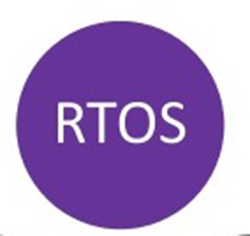Analysis of RTOS Platform with EtherCAT
The RTOS combined with EtherCAT offers an integrated software solution that changes the economics of Machine Control. The device developers can save time and cost in the designing process to meet the rigorous timing for industrial automation but more importantly can save cost in wiring the backplane of the machine. EtherCAT relies on Cat5 cables just like you would use at home to connect your PC to the Internet. Cat5 costs a fraction of the cost of proprietary cabling which can be as expensive as $30/foot or 70Euros/meter. The technologies have made the computing experience to be efficient as there is effectiveness in the transmission of data within a machine and between machines. Indeed, the EtherCAT is one of the reliable technologies that comes with multiple benefits for realizing a real-time computing environment.
Consequently, EtherCAT combined with a Real-Time Operating System are gaining popularity in industrial automation as it has multiple benefits. First, the system can replace traditional fieldbuses. As a result, only a single computer is needed in a network which can control up to 1000 motors. Besides, EtherCAT enables the users to release high-performance controls for machines. It also has the capability of exchanging distributed signals with the cycle times that are below 125us. The aspect allows devices to be addressed through a single Ethernet telegram that has multiple EtherCAT commands which result to an increased rate of data usage. Moreover, the technologies do not depend on transmission speed. For instance, it can be used with 2GB without any need for modification.
The RTOS platform can offer industrial automation solutions by increasing the value and power of real-time Ethernet and Windows. Besides, the platform also enables the developers to utilize Microsoft’s Visual Studio in a solely integrated growth environment to encourage efficiency in the development process. The technologies can also drive scalability for the real-time applications effectively. Indeed, through the RTOS platform, one can conduct real-time application processing of about 63 cores in a single machine. It also enables the designers to obtain complete control over processor load balancing. The platform assures total hardware independence such that designers do not need custom hardware in the delivery of real-time application processing. Thus, the technologies have played a vital role in growing the market share of numerous firms especially by creating new markets that are considered hard to penetrate.
In conclusion, the RTOS platform with EtherCAT is highly equipped with the necessary tools for industrial automation, motion control and machine control. It can exchange distributed signals with the cycle times that are below 100us. The technologies can also drive scalability for the real-time applications effectively. Also the RTOS platform assures total hardware independence which allows the designers to conduct operations effectively. No other OS/Fieldbus combination can outperform an RTOS with EtherCAT on a PC.
